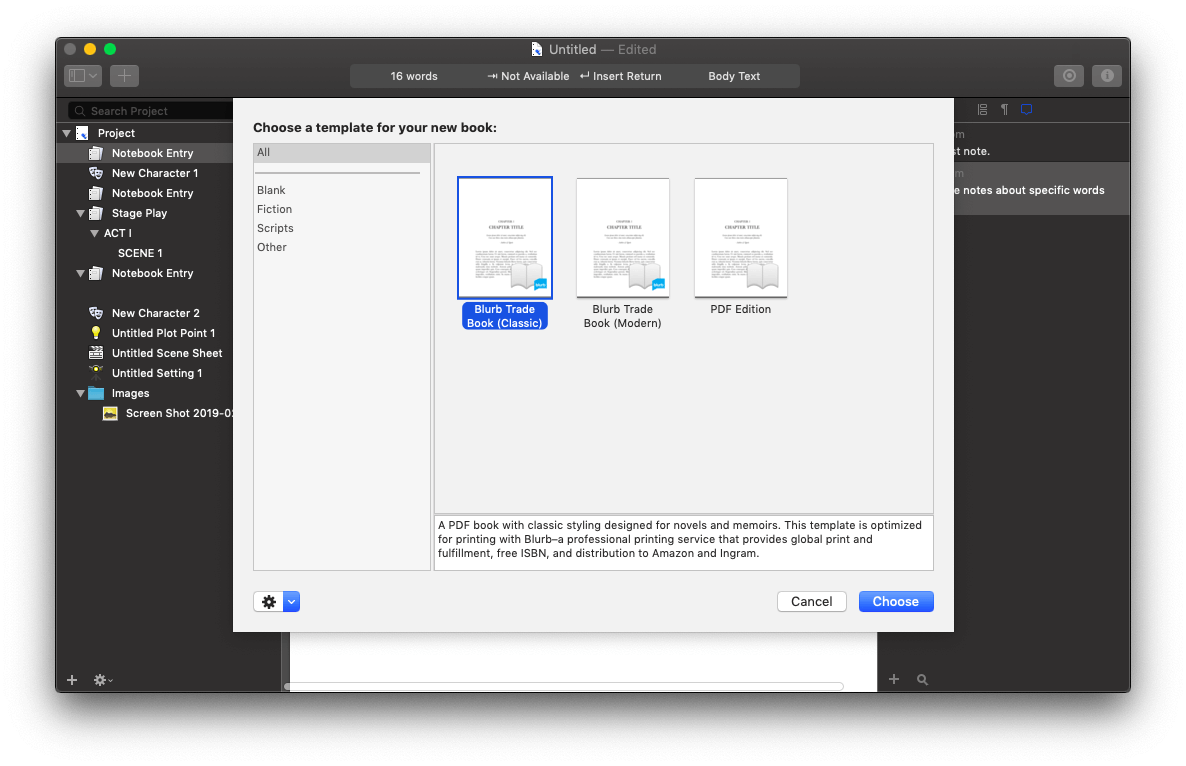
This might happen if, for example, you print out only the manuscript, with no title or front matter, and don’t want that first page to start 14 lines down. To avoid this from happening to the very first document of the compiled output, check this box here. For example, if your settings create a page break for every new chapter (folder) and “page padding” is set to 14 on the Formatting pane, the first page of every new chapter will have fourteen blank lines inserted before the Chapter Title. This is an option available from the Formatting pane, “Page Padding.” If there is padding set on the Formatting page, any time a new page is created it will have the specified number of blank lines inserted at the top before the Title, Title Prefix, Title Suffix, or page text. With the first option checked (“Do not add…”), the compiler will not insert padding on the top of the first page of the document if that document would otherwise have padding. There is one option always present and one present to all output types except iBook Author, the “Do not add page padding to first document” (all) and “End of text marker” (all except iBooks). Options available to the Options pane change somewhat depending on what kind of output type for which you are compiling. Wherever two text documents appear in your binder, visually separating them. This image will now appear with a blank line above and another below To use that file in your “custom” file->file Separator type, select “Custom” for the Text separator and type into the text field next to the popup menu. As an example, let’s say you have an image file called “transition”, which you have placed in your binder.

If you have already imported the image into the binder (which I recommend, just for simplicity’s sake), you can simply use the name that shows up in the binder. The image placeholder tag is, with a required element after the colon that identifies the image to use. This includes the Image Placeholder tags.

You can get creative here if you want to since the “custom” type permits a line of text to be included. For each of these transitions, there can be one of four separators selected: a single return, an empty line, a pageīreak, or a custom separator you type in the space next to the selection. There are four transition types: from a text file to another text file from a folder to another folder from a folder to a text file and, from a text file to a folder. The Separators Option pane allows you to configure how Scrivener’s compiler handles the transition between objects in the Binder, essentially.

The Tables Option pane is also not available when the output is a MultiMarkdown file format. fountain (a “plain text markup language for screenwriting”) formatted files.
#STORYIST VS SCRIVENER 2015 SOFTWARE#
fdx (file formats for Final Draft, a scriptwriting software package) or. To recap, these three Option panes are not available when compiling to. Today I’ll be going over three of the Option panes that are present in almost every “Compile For:” output kind, Separators, Layout, and Tables.
#STORYIST VS SCRIVENER 2015 SERIES#
Welcome back to my series on Compiling in Scrivener.


 0 kommentar(er)
0 kommentar(er)
